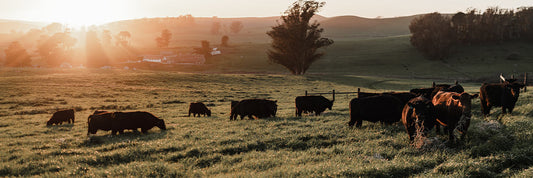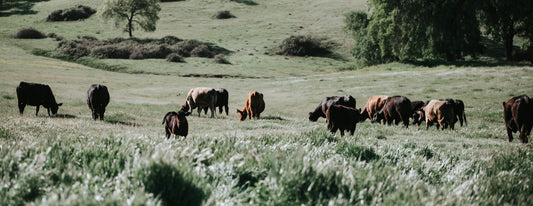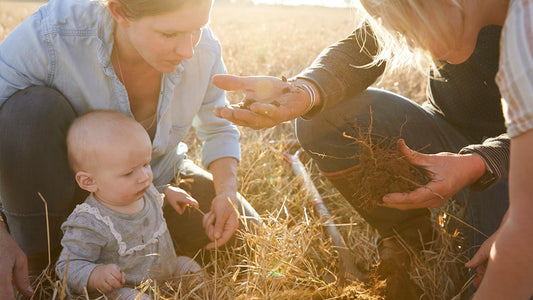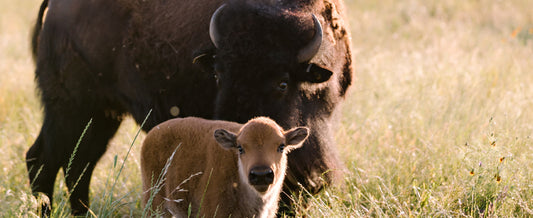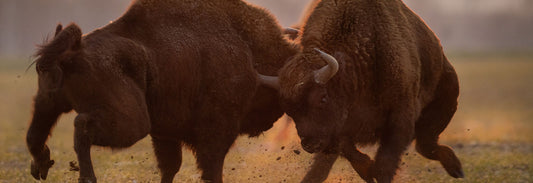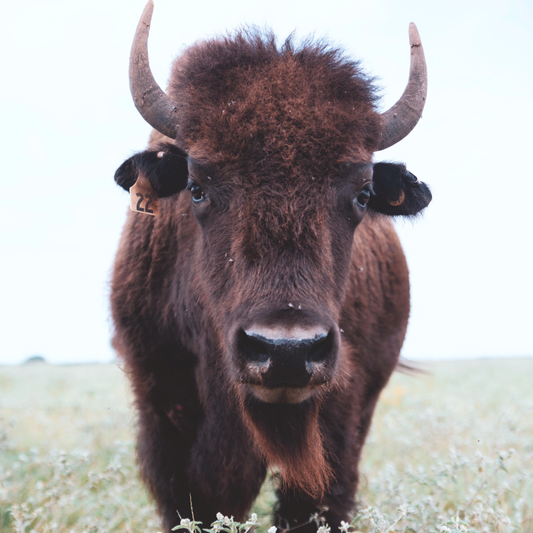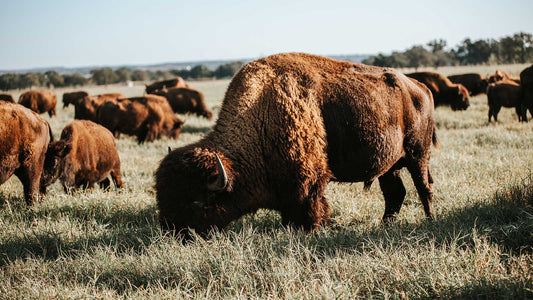Nerdout: Understanding How Grasslands Really Work

When we talk about regenerative animal agriculture, by-and-large we are talking about restoring the vast grasslands of the world. Though it is often overshadowed by other charismatic biomes (think tropical forests and towering mountains), this ecosystem is really quite exciting… and possibly even more important.
Found in temperate and tropical geographies alike, grasslands are the traditional home to migrating herds of bison, thousands of different grasses and flowers, and enough butterflies to darken the skies. Grasslands make up roughly 40% of global land cover - 60% of which is devoted to grazing livestock for their meat, milk and other animal products. That’s nearly 13 million square miles of working lands that also support wildlife habitat, natural system cycling, and, of course, rural communities. Some farming approaches help to regenerate and revitalize the grasslands, while others are more destructive, leading to chemical intensive monocultures, contaminated waterways, and desertification of a once thriving landscape.

In the United States, upwards of 96% of the prairie has been seriously degraded or converted into cropland. Let me say that again, just to make sure it sticks: almost all of our domestic grasslands have been destroyed or are in serious decline. Us humans are primarily responsible for the decay, and climate change is projected to exacerbate this downward trend. Much of this degradation is spurred on by economic pressures, of course, such as subdivision for development, plowing the land to replace the native ecosystem with a variety of crops or overgrazing in hopes of increasing short-sighted financial gains.
Intact and highly functioning grasslands provide an array of what are called “ecosystem services” – which, besides being one of the more annoying phrases in the English language, refers to the benefits that humans and other living creatures receive when nature is allowed to do her thing. Examples include the formation of soils, water & nutrient cycling, food & fiber production, climate change mitigation, not to mention jobs and so on. In other words, restoring grasslands using regenerative grazing is pretty much a positive across the board.
Before we go any further with our evangelizing of regenerative farming, let’s first take a step back and make sure we have a tight grasp of exactly what it is that drives this terrestrial environment. Turns out there are four main processes that we need to know about: the water cycle, the mineral cycle, the flow of energy, and community dynamics. All four of these processes are integral to each other, and combine to affect the ecosystem as a whole.

The Water Cycle:
Rain. What can you say – we gotta have it. We all know how vital rain truly is, but we also need to understand that not all rain is equally beneficial because not all land is equally capable of receiving its benefits. When rain occurs over land, that water will, generally speaking, either absorb into the soil (that’s a good thing), or pool on the surface or runoff to the rivers, lakes and seas (not such a good thing). In somewhat broad terms, this is the difference between an effective and an ineffective water cycle. Effective rainfall is that which is absorbed by the soil to become available to plant roots, insects, and microorganisms, or that replenishes underground supplies. Ineffective rainfall, on the other hand, pools at the surface and evaporates, or worse, it leads to damaging floods that wash away millions of tons of topsoil every single year. Your average conventional farming operation will lose between 4 and 10 tons of top soil per acre each and every year.
These elements of the water cycle hopefully make it clear that it is not only the amount of rainfall that is important, but also the effectiveness of the rainfall that determines the productivity of land. Regenerative management of livestock can significantly enhance this effectiveness.
The Mineral Cycle:
Healthy soil is made possible by a continuous supply of natural fertilizers, like animal wastes and decomposing plant material, that provide minerals to a seemingly infinite number of microorganisms living just below the surface. This benefit can be achieved by focusing the waste streams of many animals in a relatively tight space using high-density grazing, which allows the animal waste streams to be pressed through the top layer of the soil by repeated hoof impact.
An effective mineral cycle will display a series of characteristics. Besides the surface litter cover, there will be a good number insects and microorganisms, and the various plants will grow with tight spacing. This will help the soil surface to remain porous (which also helps with water absorption), and for abundant root life to penetrate deep through multiple layers of the soil substrate. All of these characteristics will encourage active root, insect and soil microbial life which leads to plant growth and a healthy ecosystem.
The Energy Cycle:
Energy is what makes life move. It’s what powers the seemingly infinite interactions that take place throughout the environment. It’s not only what makes livestock grow big and strong, but also what allows microorganisms to exchange nutrients within the web of life. At the elemental level, this can largely be visualized as carbon, especially the carbon content of the soil. As carbon is absorbed by plants via photosynthesis and sequestered in the soils, greater amounts of water can be retained across the landscape and minerals can become more readily available for living beings throughout the ecosystem. Additionally, this carbon is being drawn from the atmosphere, meaning that as it moves from the air to the soil it is lessening the burden of climate change.
Community Dynamics:
This one gets a bit more esoteric than the 3 cycles just mentioned. Community dynamics refers to the “continuous development” of ecosystems. Nature evolves to be more and more complex, which is to say biologically diverse, and this complexity in turn provides relative stability and resiliency of an ecosystem. Being more stable and resilient allows a farm to thrive even during periods of drought or flood when many conventional operations go into panic mode. You can see some of the biodiversity we are talking about by walking through a field, but the vast majority of community dynamics occur below the soil surface. A greater abundance of water, minerals and energy within the environment are really what drives community dynamics.
***

How land managers choose to apply their livestock to a landscape can greatly influence each one of these ecosystem cycles in route to enhancing the productivity of their land. It is important to note again that none of these four ecosystem characteristics - the water cycle, the mineral cycle, the energy cycle, and community dynamics – are able thrive in isolation from the others. In fact, all of these elements are maximized as these four processes become enhanced simultaneously - because in reality, they are only different aspects of the same system.
Conventional grazing systems, for their part, generally do not take these ecosystem processes into account when determining management plans, but rather focus efforts on matching animal stocking rates to available forage with little regard for the true impacts they are having on their land. These systems, with their low frequency of moving livestock to new pastures, also do little to focus animal impact, as grazers are free to roam however they choose. Denying a grassland the proper types of animal impacts, and replacing them with negative impacts, can lead to a degraded ecosystem, including a less robust supply of forage. Regenerative grazing, on the other hand, requires land managers to more carefully account for the entirety of the property under management, including the four ecosystem processes and livestock, while improving conditions for future forage growth.
Farming and ranching that intentionally seeks to improve these ecological processes is the essence of regenerative agriculture. So if you are looking to buy grass fed beef, bison, elk or venison, Force of Nature has you covered with the best meat on the planet, for the planet!





